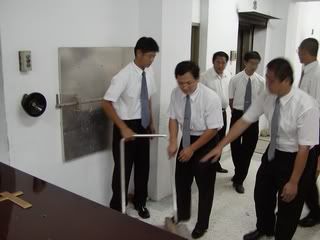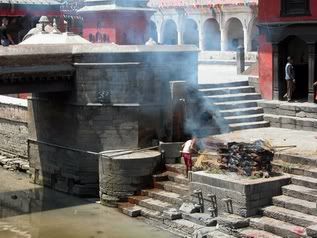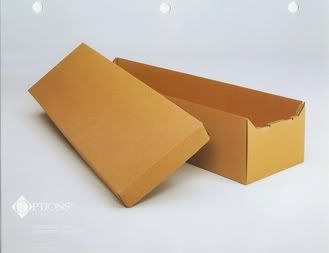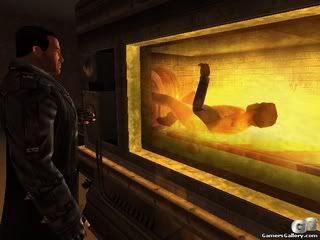Dharmic faiths
While the Abrahamic religions prohibit cremation or prefer burial over cremation, the Eastern religions (i.e., Dharmic faiths) such as Hinduism and Buddhism mandate the use of cremation. In Sikhism, burial is not prohibited although cremation is the preferred option for cultural reasons rather than religious.

Christian
In Christian countries, cremation fell out of favour with the people. The Catholic Church's discouragement of cremation stemmed from several ideas: first, that the body, as the instrument through which the sacraments are received, is itself a sacramental, a holy object; second that as an integral part of the human person (St. Thomas Aquinas, for instance, specifically rejected the notion that the human person is merely the soul "trapped" in a body) it should be disposed of in a way that honors and reverences it, and many early practices involved with disposal of dead bodies were viewed as pagan in origin or an insult to the body; third, that in imitation of Jesus Christ's burial, the body of a Christian should be buried; and fourth, that because cremation was often seen as or used as a statement by certain groups denying the resurrection, allowing it would confuse the faithful. The Church never forbade cremation because of any alleged belief that it interfered with God's ability to resurrect the body.
Cremation was, in fact, not forbidden in and of itself - even in Medieval Europe cremation was practised in situations where there were multitudes of corpses simultaneously present, such as after a battle, after a pestilence or famine, and where there was an imminent danger of diseases spreading from the corpses. However, earth burial or entombment remained the law unless there were circumstances that required cremation for the public good.
Beginning in the Middle Ages, and even more so in the 18th Century and later, rationalists and classicists began to advocate cremation again as a statement denying the resurrection and/or the afterlife. The Catholic Church's rules against cremation became hardened in the face of this. These rules were softened in the 1960s. The Catholic Church still officially prefers the traditional burial or entombment of the deceased, but cremation is now freely permitted as long as it is not done to express a refusal to believe in the resurrection of the body.
Until 1997, Catholic liturgical regulations required that cremation take place after the funeral Mass, so that, if possible, the body might be present for the Mass - the body was present as a symbol, and to receive the blessings and be the subject of prayers in which it is mentioned. Once the Mass itself was concluded, the body could be cremated and a second service could be held at the crematorium or cemetery where the ashes were to be interred just as for a body burial. The liturgical regulations now allow for a Mass with the container of ashes present, but permission of the local bishop is needed for this. The Church still specifies requirements for the reverent disposition of ashes, normally that the ashes are to be buried or entombed in an appropriate container, such as an urn (rather than scattered or preserved in the family home, although there are Catholics who do this anyway). Catholic cemeteries today regularly receive cremated remains and many have columbaria.
Protestant churches were much more welcoming of the use of cremation and at a much earlier date than the Catholic Church. The first crematoria in the Protestant countries were built in 1870s, and by 1910 Westminster Abbey, one of the most famous Anglican churches, was requiring that remains be cremated for burial in the abbey's precincts. Scattering, or "strewing," is an acceptable practice in many Protestant denominations, and some churches have their own "garden of remembrance" on their grounds in which remains can be scattered.
On the other hand, some branches of Christianity still oppose cremation. The Eastern Orthodox Churches, for instance, forbid cremation. Exceptions are made for circumstances where it may not be avoided (when civil authority demands it, or epidemics) or if it may be sought for good cause, but when a cremation is willfully chosen for no good cause by the one who is deceased, he or she is not permitted a funeral in the church and may also be permanently excluded from liturgical prayers for the departed. In Orthodoxy, cremation is a rejection of the dogma of the general resurrection, and as such is viewed harshly.

Other personal reasons
Some people find they prefer cremation for other reasons. For some people it is because they are not attracted to traditional burial. The thought of a long, slow decomposition process is unappealing to some, and they find that they prefer cremation for that reason.
Other people view cremation as a way of simplifying their funeral process. These people view a traditional burial as an unneeded complication of their funeral process, and thus choose cremation to make their services as simple as possible.

Environmental reasons
Others prefer cremation for environmental reasons. Some are concerned that during bodily decomposition body fluids and embalming chemicals could contaminate the Earth. Some locations have found that long-buried bodies are now causing groundwater contamination [citation needed]. Arsenic, used as an embalming chemical in the 19th and early 20th centuries, has been known to cause serious pollution later on.
Another environmental concern is that traditional burial takes up a great deal of space. In a traditional burial the body is buried in a casket made from a variety of materials. In America the casket is often placed inside a concrete vault or liner before burial in the ground. While individually this may not take much room, combined with other burials it can over time cause serious space concerns. Many cemeteries, particularly in Europe and Japan as well as those in larger cities, are starting to run out of space. In Tokyo, for example, it is almost impossible to find a traditional funeral plot.

One item of concern has been that the exhaust systems of cremation ovens may contribute to air pollution. The emissions are of concentrated CO2 along with a number of other harmful chemicals. Testing has been done to improve the emissions by gathering information from different heat temperatures from the ovens. The higher the temperature, the more likely for a dangerous amount of harmful greenhouse gas to escape into the Earth's atmosphere. In response crematorium manufacturers have built computerized control systems that regulate the exhaust systems but are not proven to be adiquately safe. Additionally some crematoria remove all plastic handles and fittings from a coffin before cremation and these are disposed of separately for the same reason.

Cost of cremation
The cost factor tends to make cremation attractive. Generally speaking, cremation costs less than traditional burial services, especially if direct cremation is chosen, in which the body is cremated as soon as legally possible without any sort of services. However, there is wide variation in the cost of cremation services, having mainly to do with the amount of service desired by the deceased or the family. A cremation can take place after a full traditional funeral service, which adds cost. The type of container used also influences cost.
Cremation makes possible the scattering of remains over an area, eliminating the need for and expense of a burial space. However, some religions such as Roman Catholicism require burial or entombment of cremated remains, and while not required the church does prefer that cremation take place after the funeral Mass. Burial or entombment also adds to the cost. The price will depend on what the deceased and/or the family has chosen. Cremated remains require far less space than a traditional burial or entombment and cremation plots or columbarium niches usually cost less than a burial plot or mausoleum crypt.
From Wikipedia
No comments:
Post a Comment